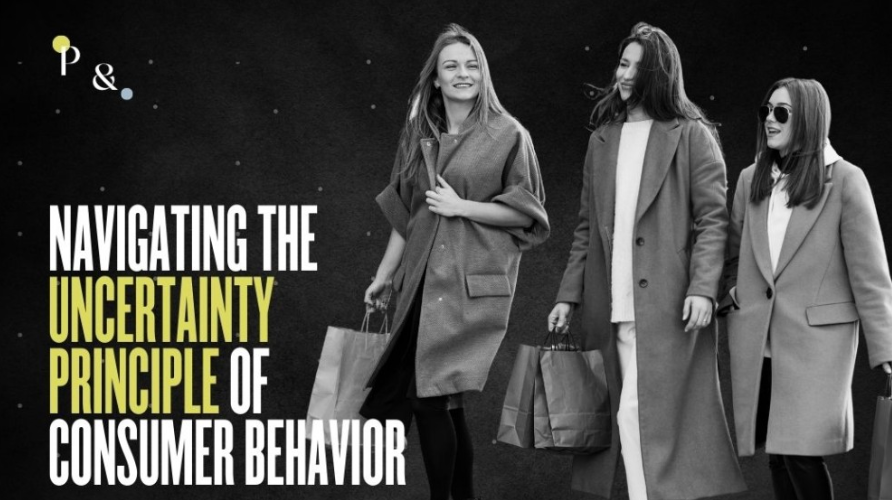Understanding consumer behavior has long been a fascinating puzzle. Just when we think we have it all figured out, a new layer of complexity emerges. Enter the “Uncertainty Principle” of consumer behavior, a concept borrowed from the realm of quantum physics. This intriguing analogy sheds light on the unpredictable nature of how consumers make decisions, and in this blog post, we’ll explore how brands can navigate this uncertainty while keeping their marketing strategies engaging and effective.

What Is the Uncertainty Principle of Consumer Behavior?
The Heisenberg Uncertainty Principle, a cornerstone of quantum physics, states that the more precisely the position of a particle is known, the less precisely its momentum can be predicted. In the realm of consumer behavior, the Uncertainty Principle represents the idea that the more data we gather about consumers’ preferences and actions, the less we can predict their next move with absolute certainty. There are myriad factors influencing consumer behavior, making it akin to predicting the unpredictable path of subatomic particles.
Embrace Data but Don’t Rely Solely on It
In the age of big data, businesses have access to an unprecedented amount of information about their consumers. This data is invaluable for understanding trends and patterns, but it has its limits. The Uncertainty Principle of consumer behavior reminds us not to rely too heavily on data-driven predictions. Data can provide insights, but it cannot perfectly capture the intricate web of factors that influence a consumer’s choices.
To navigate this uncertainty, brands should employ a mix of data-driven analysis and creativity. Don’t just crunch numbers; encourage your marketing team to think outside the box. After all, consumer behavior isn’t purely rational; it’s also emotional, impulsive, and often subject to unforeseen external influences.
The Role of Emotional Triggers
One of the intriguing aspects of the Uncertainty Principle of consumer behavior is the role of emotional triggers. Emotions can sway consumer choices in unpredictable ways. A humorous advertisement, a touching story, or a heartwarming video can tap into the emotional side of consumers, influencing their decisions.
For instance, during the COVID-19 pandemic, brands that showcased empathy and compassion in their advertising campaigns resonated with consumers. They touched an emotional chord during a time of uncertainty, creating stronger brand connections.
Adaptability Is Key
The Uncertainty Principle reminds us that consumer behavior is dynamic and subject to change. This is where adaptability becomes crucial for brands. Stay attuned to shifts in consumer sentiment and preferences. Be ready to adjust your marketing strategies as needed. In the digital age, trends can rise and fall in a matter of days, and consumer behavior can evolve just as rapidly.
Engage with Your Audience
Engagement is a powerful tool for navigating the Uncertainty Principle of consumer behavior. Engaging content, whether it’s a thought-provoking blog post, a viral social media challenge, or an interactive webinar, can foster a sense of connection between your brand and your audience. When consumers feel engaged, they are more likely to stay loyal, even when faced with unpredictable market changes.
Conclusion
The Uncertainty Principle of consumer behavior serves as a reminder that the art of predicting consumer choices is inherently uncertain. While data-driven insights are valuable, they aren’t a crystal ball into the minds of consumers. Brands must embrace creativity, adaptability, and emotional connections to thrive in an environment where consumer behavior is a constantly moving target.
To navigate this uncertainty successfully, it’s essential to remain engaged with your audience, ready to adjust your strategies as needed, and open to the possibility of surprises and unpredictability.

